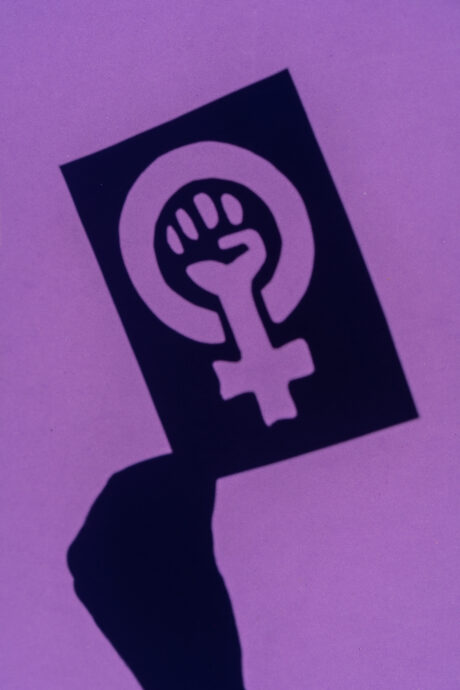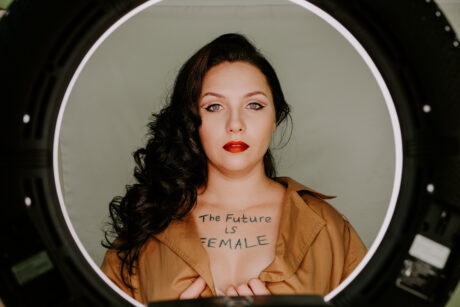Women + Meat
Which One Is Most Devoured By Societal Exploitation?
In her essay Why Feminist-Vegan Now?, Carol J. Adams draws an unflinching line between the consumption of non-human animals and the exploitation of women under patriarchy, insisting that feminism cannot be whole unless it considers the ways female animal bodies are commodified, consumed, and silenced.
Her provocative claim that “in a patriarchal, meat-eating world animals are feminized and sexualized; women are animalized” (Adams, 2010, p. 304) invites a radical rethinking of how we understand embodiment, consumption, and violence. This idea doesn’t simply draw a poetic parallel—it forces an ethical reckoning. It opens a lens that frames violence not as isolated acts of domination but as a systematized continuum of control over feminized bodies—whether they are human or not.
Vegan-feminism is an intervention that critiques and is visionary, that looks at individuals and at social structures, that deconstructs but also offers solutions. Vegan-feminism is always a question of now.
– CAROL J. ADAMS
This point compels us to interrogate the narrative of who is granted moral consideration and who is not. When Adams positions animals as feminized and women as animalized, she is articulating a double bind of objectification: one group is stripped of humanity, the other stripped of agency, both rendered consumable. I find myself asking: How can this insight reshape feminist praxis, especially in cultures where food, identity, and gender are deeply entangled? What might activism look like if we centered not only human liberation but the dismantling of all systems that feed off reproductive exploitation?
Adams’ concept of the “absent referent”—another pivotal idea—elaborates on this very invisibility. As she writes, the absent referent “in which woman is the absent referent, and the cover image of the woman divided into ‘meat’, in which the dead animal is the absent referent” (Adams, 2010, p. 308-309). This notion doesn’t just apply to food; it reverberates across how violence is sanitized, abstracted, and normalized. This is embodied when Adams writes, “The sexy industry – the selling of women’s bodies – provides an enduring metaphor and image for other consumable bodies, in which women become the absent referents” (Adams, 2010. p. 310). The body becomes a product. The identity becomes erased. Here, the philosophical converges with the personal: the more we disassociate from the source of violence, the easier it becomes to perpetuate it. In both meat industries and systems of gendered oppression, this disconnection acts as a shield.
In response, I would ask Adams how this framework could extend beyond Western dietary practices. Is the absent referent a universal function of patriarchal capitalism, or does it manifest differently in Indigenous, matriarchal, or collectivist food cultures that approach animal life with ritual and respect? These nuances matter when shaping a truly intersectional feminist-vegetarian ethic that avoids reinscribing cultural imperialism in its prescriptions. A third compelling argument Adams presents is the idea of feminized protein, which describes how dairy, eggs, and other byproducts that rely on female animal reproduction are feminized in their function and fetishized in their use.
“Animalizing discourse is a powerful tool in oppression. Animalizing discourse also often subsidies for an analysis of why violence against women happens; that is, rapists and batterers or others who commit acts of violence are often animalized,” Adams writes, calling out the overt and covert exploitation of femininity for consumption (2010, p. 313).
This claim slices through the comfort of mainstream vegetarianism. It’s not just about whether we eat meat—it’s about whether we endorse the instrumentalization of reproductive labor, even in its subtlest forms.
This framing demands deeper accountability. If feminist ethics are grounded in autonomy, consent, and bodily sovereignty, then surely this must extend to all sentient beings whose bodies are used against their will. It challenges us to think not only about what we consume but about how we consent to structures of power when we consume. I would ask Adams: How do we build coalitions that recognize animal exploitation without alienating marginalized communities for whom food sovereignty and survival are central struggles?

Finally, Adams’ claim on the last page lingers: “The process of objectification-fragmentation-consumption can be interrupted by the process of attention-nowness-compassion. The enlightened humanist subject, the sexual-politics-of-meat subject insists on history,” (2010, p. 315). This resonates not only as truth, but as invitation. Eating is an intimate, embodied act, one that locates us in a web of choices, traditions, and power. It can be an act of resistance or resignation.
It can liberate, or it can enslave. I agree with Adams wholeheartedly here. Food is never neutral. It is culture, identity, ethics, and—if we choose—revolution.
In the end, Carol Adams’ feminist-vegan theory is not asking feminism to become something else. It is asking it to fulfill its promise. If feminism is a movement that seeks to dismantle all hierarchies of domination, then it must be willing to look beyond the human. To look at suffering, to name it, and to act against it—no matter whose body bears its weight.
Eating is an intimate, embodied act ... It can b an act of resistance or resignation.
DAWN GARCIA

If feminism is a movement that seeks to dismantle all hierarchies of domination, then it must be willing to look beyond the human.
REFERENCES
JSTOR is a digital library for scholars, researchers, and students. JSTOR Daily readers can access the original research behind our articles for free on JSTOR.
Adams, C. J. (2010). Why feminist-vegan now? In The sexual politics of meat: A feminist-vegetarian critical theory (20th anniversary ed., pp. 302–316). Continuum.
ABOUT ARTIST BARBARA KRUGER
Barbara Kruger (b. 1945) is one of the world’s most provocative, distinctive and original American artists. In the early 1980s, she developed a distinctive visual language that was influenced by her early work as a graphic designer for women’s fashion magazines. Her work frequently consists of appropriated black and white photographs, overlaid with captions set in white on red Futura Bold. These works which range from playful to menacing, borrowing their approach from both advertising and propaganda.
The slogans Kruger uses are frequently provocative maxims or slogans that question patriarchy, identity, gender politics and consumerism.
Many of these ideas circulate Kruger’s iconic and famous “Your Body is a Battleground.”
“Dein Körper ist ein Schlachtfeld” (1990) is an interesting and very rare iteration of this work, realized here in German. A blank sketchbook’s cover and back cover depict the renowned work “Your Body is a Battlefield” (1989).
The original work was produced in 1989 by Kruger for the Women’s March on Washington in support of reproductive freedom, a heated (and sadly ongoing) political issue in America. The composition originally included more text and was designed as a poster.
Kruger has frequently worked in large-scale public installation, and numbered editioned works are quite rare. This is an early and important work from a key moment in Kruger’s illustrious career.











